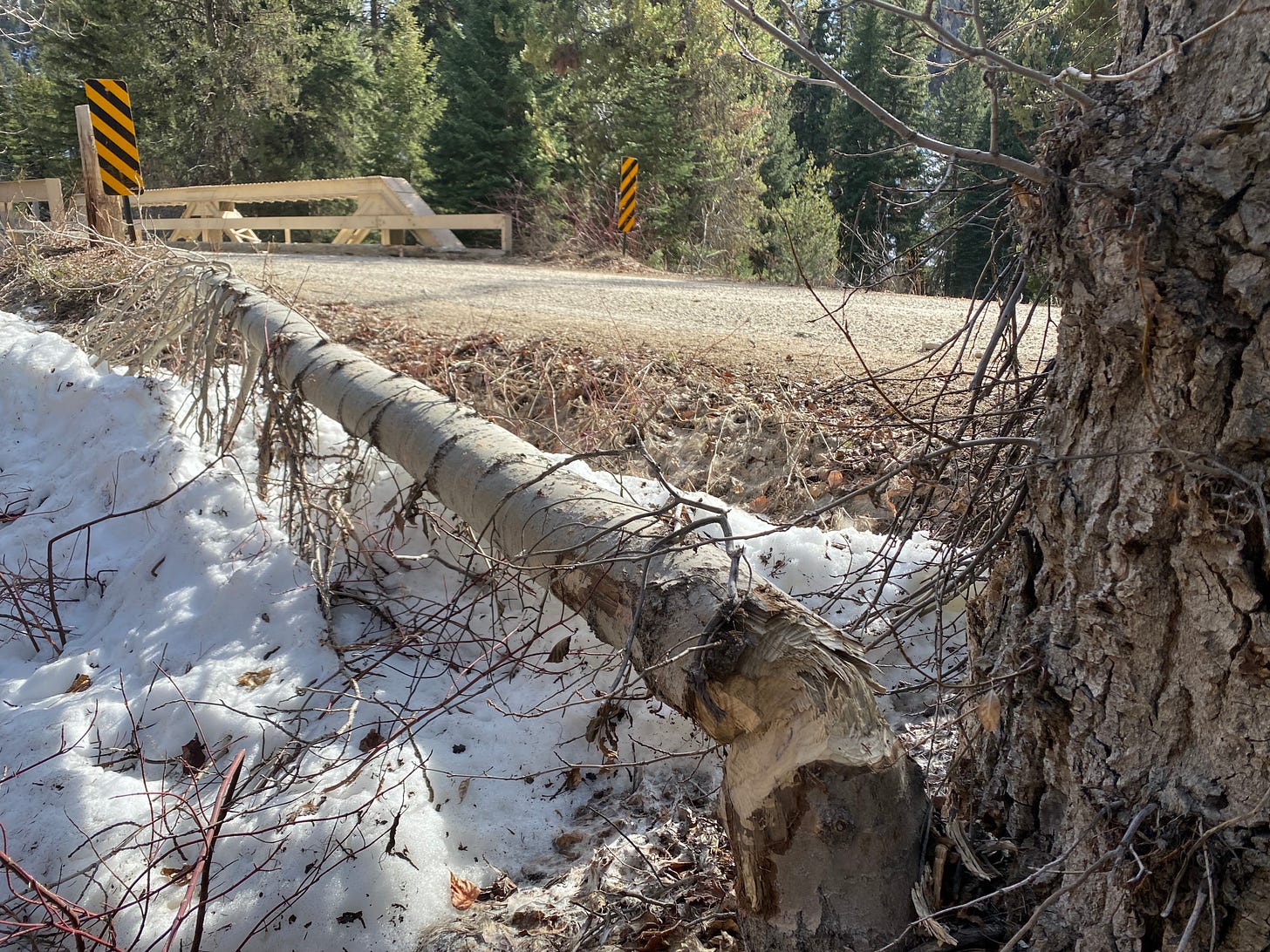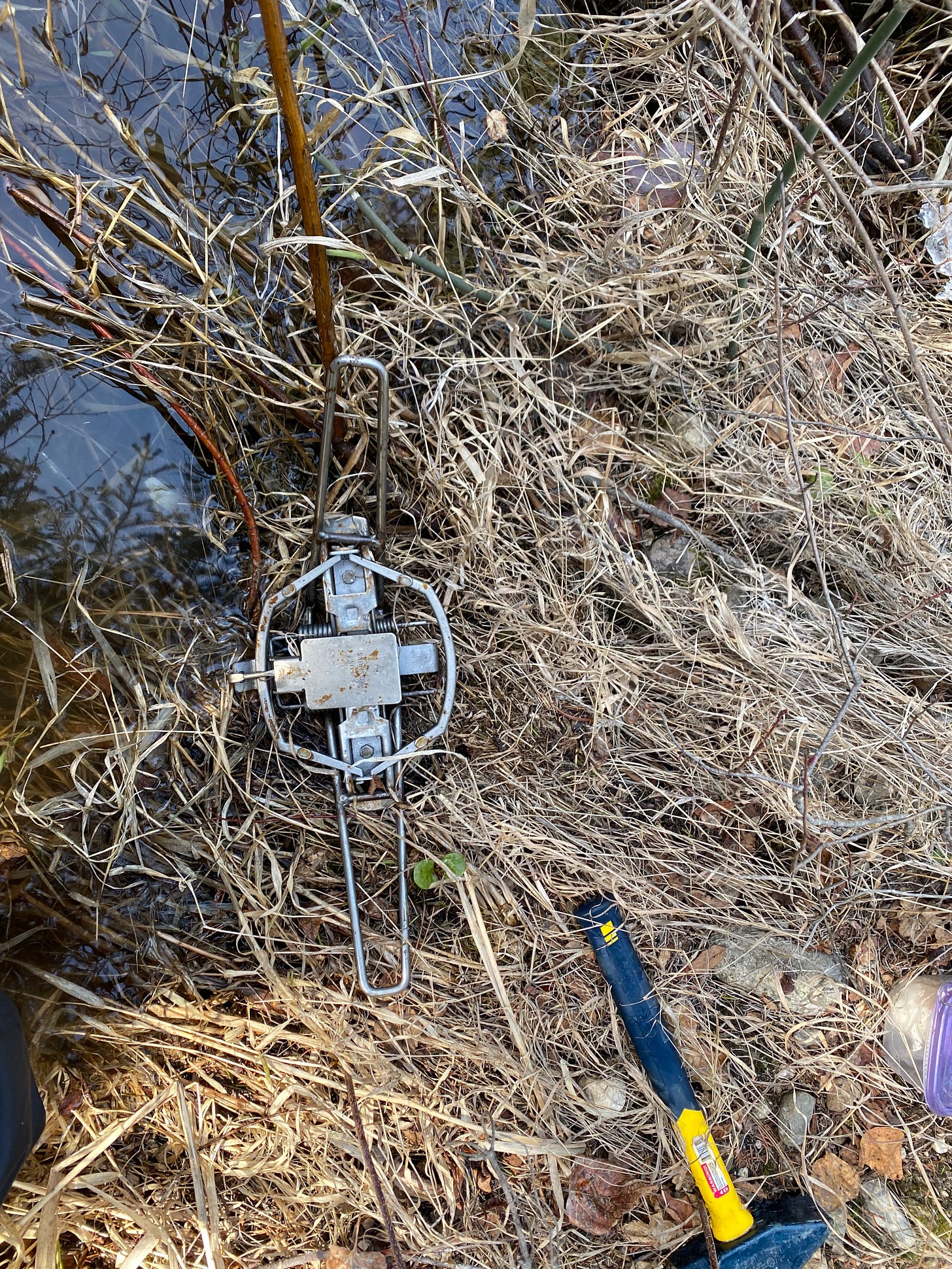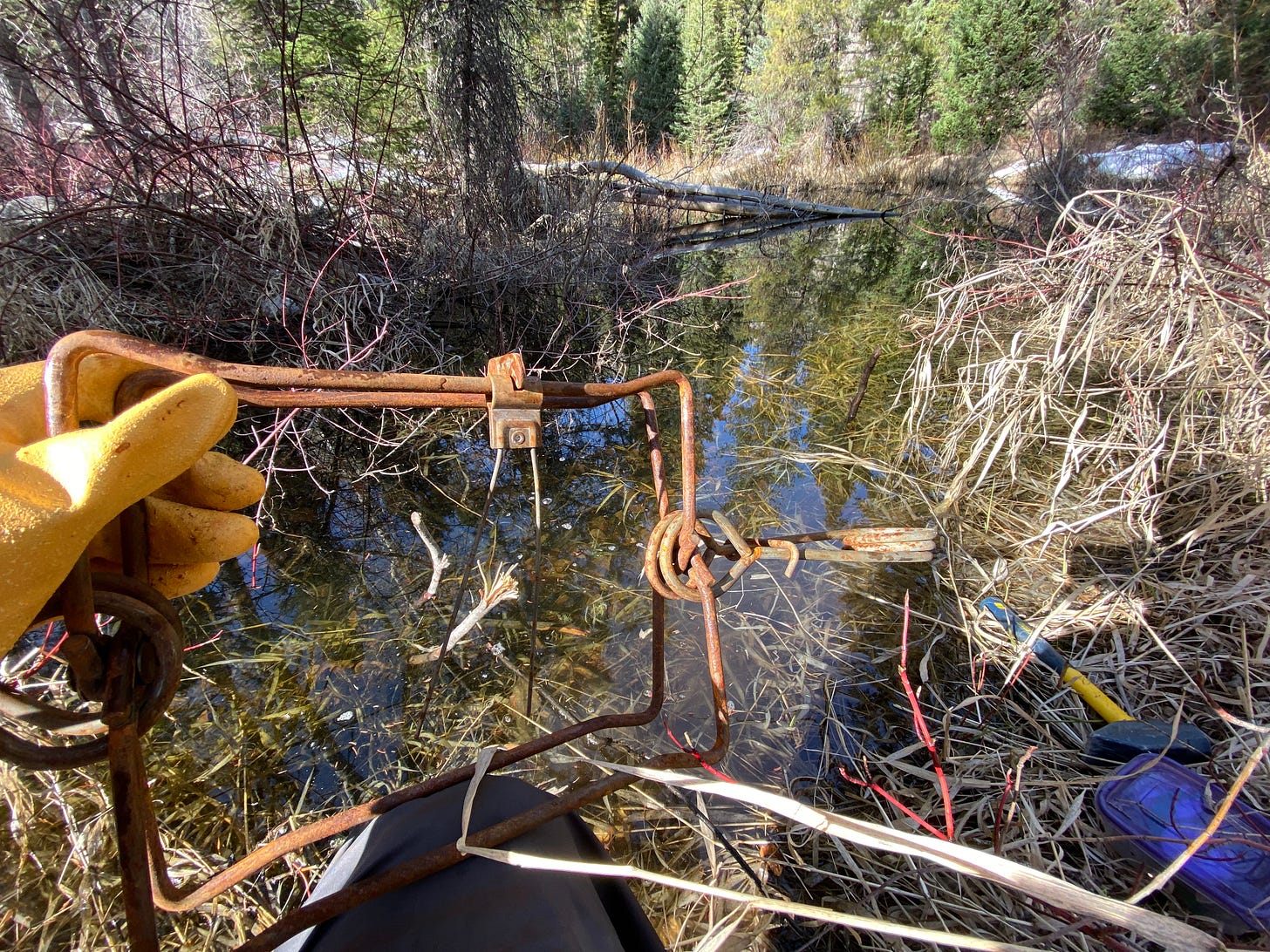One of the great things about working in tech, specifically at Brightcove, is that we take half day Fridays, and with my working east-coast hours that means I usually wrap up around ten or eleven am and can hit the woods to do what I love. So, with a special kill permit in my pocket* from IDFG for some nuisance beaver affecting our road and dam system — I set off early last Friday afternoon to set and check traps for two days.
With specific targets in mind, I was out to work a few different areas... My first stop was a spot down river from our town where folks had told me that Beaver had been actively chewing down trees, with some blocking the road. When I got to the scene my first order of business was to find the signs, which didn’t take long. There were freshly chewed on trees right below the bridge I was observing from, as well as some beaver tracks in the remaining snow going in and out of the river.
After scouting for about an hour I decided to focus on two specific areas. The first was a “beaver slide,” an area where there was sign that a beaver frequently slides in and out of the water, and the second was a deep water channel that looked like a beaver super-highway. For the “slide” area I would be using a foothold trap attached to a drowning wire — with the hopes that a beaver would step on the trap and then swim to the bottom and peacefully pass. For the second area, I would use what is called a 330 Conibear, which is a humane and quickly lethal trap which holds the beaver by their body when they swim through it.
With my waders on, I ventured into the very cold water (trapping somehow seems to always be cold, wet, and miserable) to get started. After some finagling and repositioning I got my traps set in my desired configuration, and the only thing that was left to do was to put out some beaver castor gland oil (which attracts beaver as they think a rival animal has encroached on their space) and post a sign letting people know there were live traps in the area.
Satisfied with my work, I hopped back in my truck and headed back up our dirt road to place one more set in a “known-beaver” area near our town’s electrical dam. For that set I would also use a 330 conibear and place it in a small swimming channel near a known bank den (a beaver lodge built into the side of the river).
For the next day and a half I would be checking these sets each morning until I needed to pull them on the upcoming Sunday afternoon. Stay tuned for the “trap checking” updates…
*As the Chairman of our Rural Highway District Commission, I had worked with Idaho Fish & Game to get a special kill permit for a handful of beaver that were flooding our roads, downing trees, and clogging up our town’s hydro electric dam.







